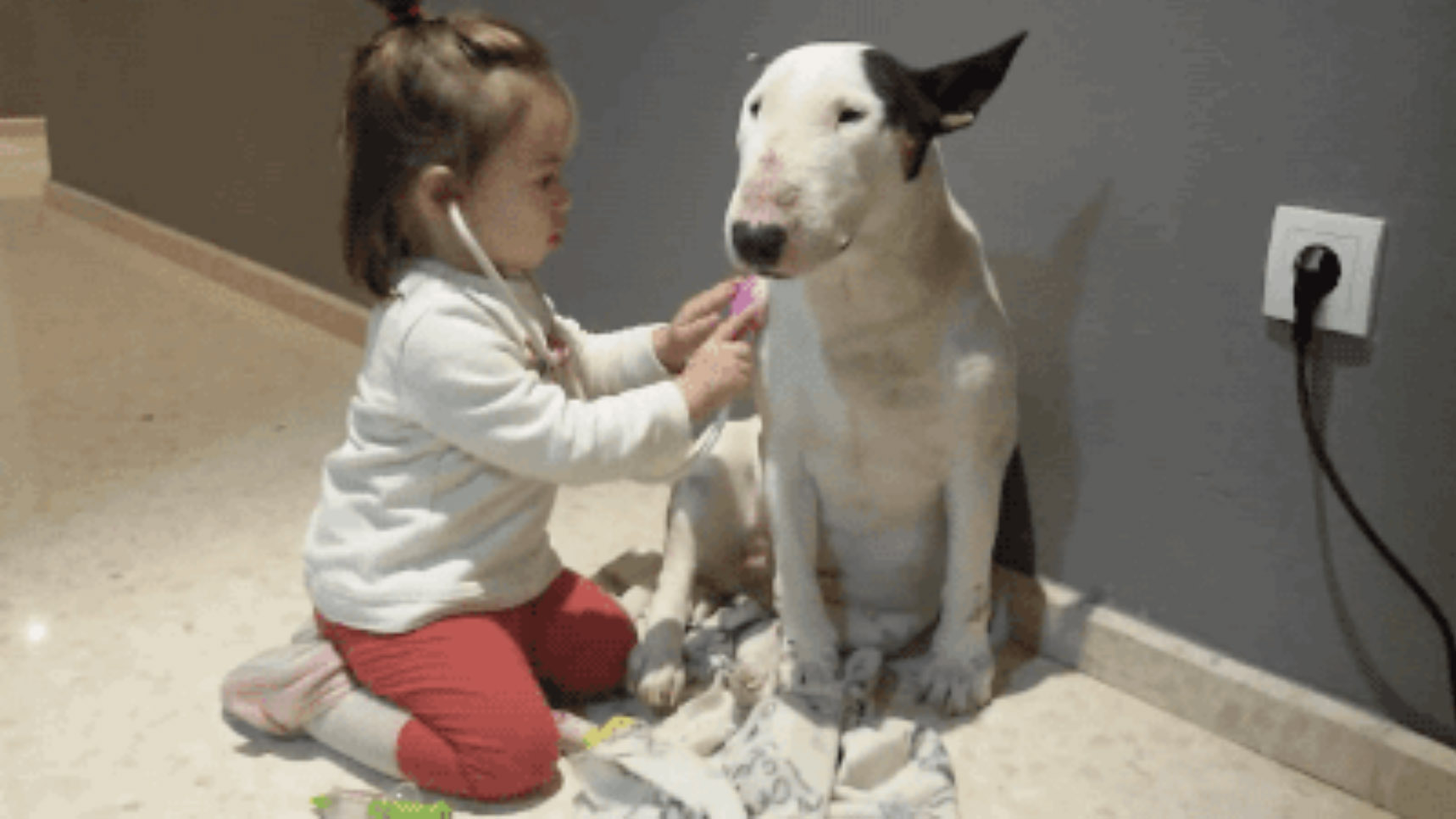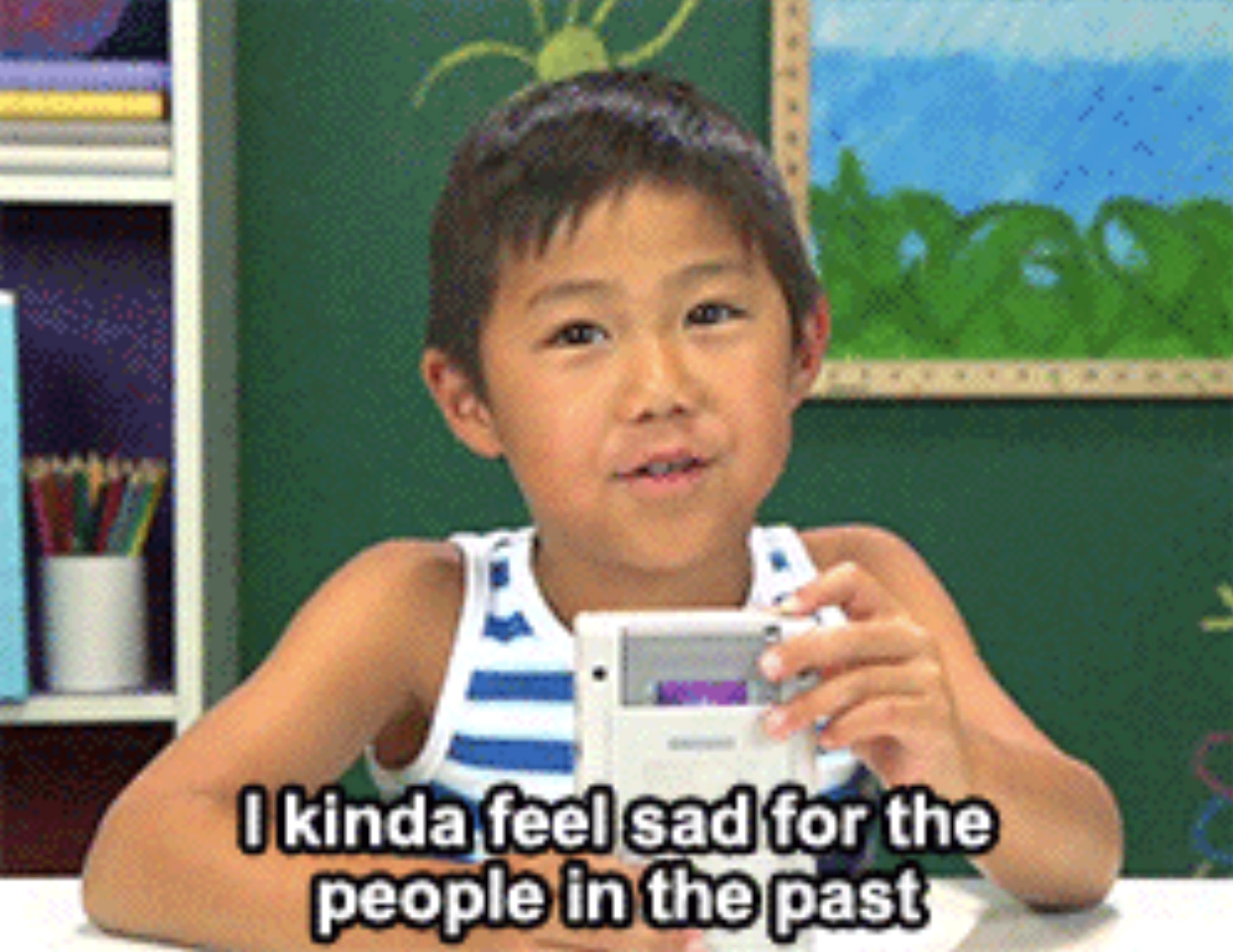In this two-part post, product designers from across our studios share their experiences of designing digital products for kids. In part one, we tackle the big picture – asking ourselves what should the digital products that we make for kids look like? What should we use for inspiration, and how can we keep them challenging? In part two, our designers, coaches and product leads will share their top 5 user-testing tips to help get your project off to a flying start.
Creating Meaningful Digital Experiences
How much of a kid’s time, and play, should be digital?
Until November 2016, the American Academy of Pediatrics suggested no screen time at all for under-twos. For older children their recommendations were equally as conservative, recommending a maximum of 2 hours a day across the board.
The problem is that by 2016 – and arguably long before – such suggestions were simply out of step with the reality of families’ digital lives. AR, VR, Hangouts, Skype, E-readers, Siri, Wearables – our digital and physical worlds are increasingly enmeshed, rendering some digital experiences for children more valuable than others. It’s not just about staring at a screen anymore.
The changes adopted last November show a marked attempted adapt guidelines to this new context. Whilst the APP still encourage those under 18 months to avoid screen media, they make an exception for video chatting and encourage those who want to introduce digital media to their 18-24 month-year-olds to choose “high-quality” programming and watch it with them. They have also introduced an interactive media planning tool – to help families with older children find what works best for them.
This is reflective of a wider shift, our understanding of digital and the value it can have for children is changing. From the perspective of the people making those products – there is an unprecedented opportunity to make challenging, hybrid digital experiences for kids growing and playing in this new context.
At ustwo, through our own user-centered approach to designing for children, we have seen the importance of allowing space for children’s innate capacity for learning. Feeding – not stifling – their boundless imaginations. Digital is a new frontier for formative free play.
In order to fully realise this potential, the development of products needs to be done with the best interests of children and their parents front of mind – and that means collaborating with them from day one. This is where our cross-studio experience comes into play: we’ve designed for and tested with kids on projects with the likes of Sky and NBC as well as our own internal projects PlayLab and Healthy Habits.
Throughout these projects, we’ve all tackled the same questions – from thinking generally about what a meaningful digital experiences for kids looks like to tackling the day to day challenges of testing with kids. How can you empower them to explore? How can you make them feel comfortable sharing their thoughts? What consideration needs to be paid to the parents’ role in the experience?
Take Inspiration From Non-Digital Play

For adults, it can be hard to shed the weight of our responsibilities and really let our imaginations fly. From the cynical heights of grown-up-dom, talking to a child or watching them play can seem alien – especially if you don’t spend a lot of time with kids. This distance makes testing your product with IRL kids doubly important.
With their freedom and lack of insecurity, kids enter easily into their own world – transforming mundane realities into magical stories. As James, a Product Lead at ustwo London, describes “they will make their own toys from whatever is to hand: a single cardboard box becomes a castle, racing car or rocket ship.”
Camilla, a Product Owner at ustwo Nordics, explicitly noted the importance of using traditional types of play – like messing around with a cardboard box – to inform how we build digital experiences. “Designing for open-ended play with no ‘correct’ end (or end at all) is inspired by simple toys and games like the kaleidoscope or finger-painting. We focused on creating extremely simple tool like toys, which the kids could then use creatively in any way they choose.”
Create a Free-Play Experience
In order to translate the freedom of traditional play into digital, teams need to focus on making interactions as frictionless as possible and steer clear of linear experiences.
Adele, one of our NYC-based project managers who worked on the Terrific Trucks project, details how they focused on removing barriers between the interface and the purpose of the app: “We were careful to build in opportunities for kids to be creative and solve problems or discover new interactions by experimenting within the experience. We didn’t build a ‘game’ with a level and goals, we built an experimental free-play app which allowed kids to gain a sense of achievement through making cool things happen.”
Jay, a Design Lead at ustwo London, echoed the importance of creating an experience that is “fun, playful and exploratory” as it also makes for a more accessible app. As kids develop very fast (something we’ll discuss in more detail in part two) and all at different paces, they won’t all come to a digital experience with the same needs and know-how. Part of the answer to this is creating an intuitive experience where kids can learn through doing – and find new ways of using it as their knowledge develops.
Think Like A Kid

In order to build a free and explorative experience, you have to think like a kid. For Jay, “designing for kids gives us an opportunity to pretend to be kids when we’re designing – and that is a lot of fun. So when we're talking about our animations and our bouncy graphics and things whizzing in and out, we’re playing with what we’re making at the same time.”
Many of our designers and project managers spoke about the importance of avoiding the projection of learned limitations – that most adults hold – into the digital world they create for children. Be sure not to rein in your ideas. James emphasises the importance of realising that “designs that can frustrate and infuriate adults give children the challenge, determination and eagerness to explore further. It’s about harnessing a child’s imagination to help unlock ideas that you’ve forgotten or thought impossible.”
Key to this is remembering that children have yet to develop rigid patterns of learning. Unlike an adult with many learned experiences to draw from, kids are used to approaching a problem where they will need to learn new things to solve it. Emma, a team coach from ustwo Nordics, says “kids are used to learning things, that’s part of being a kid. It seems like they don’t expect a product to be understandable, they expect to learn how to use it. So they don’t really express frustration with a design as quickly as grown-ups.”
This expectation that not everything will be immediately understandable, or even logical, means that kids are surprisingly resilient. Adele says “they would keep trying even if something didn’t work out as expected when we [adults] would have given up long ago.”
James expands on this, pointing out that discovering something that was designed to be hard to find, can give children a huge sense of achievement – making them feel as if they are the only ones who know about it. This attitude directly contrasts the approach of most adults "where friction within the interface can cause annoyance and result in rejecting a digital product or service entirely."
Successfully creating an experience that transcends the expectation of adults, is one the most rewarding parts of designing for kids. Camilla loves “when kids use the product in their own ways – often ways you as a grown-up hadn’t even thought about – and they have that look of wonder on their face of what they made happen: the ‘my finger is magic!’ expression.”
In the second part two of this blog post, we will get some practical advice on how to go about designing for kids – and why UX testing is key to being able to give kids that ‘my finger is magic wonder! You can read it here.
If you have questions or are interested in making a digital experience for children – reach out at hello@ustwo.com.
ABOUT ADELE MAJOR, EMMA NORDUNG, JAY CHAN, JAMES GRIFFIN AND CAMILLA DAHLE
Our contributors to this post – Adele, Emma, Jay, James and Camilla – are a group of Product Leads, Designers and Coaches from across our global studios who all have experience of making digital products for kids.
